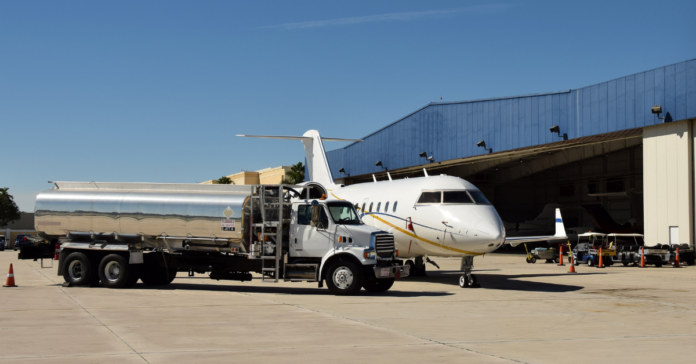

Founder and CEO of Icarus Jet, Kevin Singh discusses how aviation can achieve a sustainable path to reducing its carbon footprint with small and consistent measures.
As a pilot, I’m very passionate about aviation and as a company owner, I also understand that stakeholders want firm commitments regarding how to reduce the industry’s environmental footprint. Unfortunately, sustainable is one of those buzzwords that without proper context does not generate the expected impact. For me, sustainable means that we’re making sure that something will remain in the future while achieving the right balance – I want that for aviation.
The industry is receiving great scrutiny regarding its carbon footprint albeit all the advancements in the use of Sustainable Aviation Fuel (SAF), electrification, and overall aerodynamic efficiency. My quick thought is that we’re not controlling the narrative enough although having the hard facts while allowing the detractors to make public noise. Yet, I truly believe that more can be done today – with simple steps such as offering clients sustainable options for a private jet trip support flight major changes can be achieved.
Read more: LATAM Group completes its first international flight with SAF
Imagine if private jet providers like Icarus Jet would source electric ground powering units and offer FBOs and parking spaces or hangars that are powered with solar panels. This is a reality today, as is the case with Farnborough Airport’s new sustainable hangar project with completion scheduled for quarter one in 2024. Other Farnborough measures include 22 electric vehicle charging stations on the terminal and LED lighting on the runways, the airport building, and the hangars.
What about electric charging infrastructure? Menzies Aviation in Los Angeles International Airport (LAX) has implemented Mullen electric cargo vans for Menzie’s LAX operations as a complement to their commitment to being carbon neutral by 2033. With a global fleet of 27,000 ground service equipment, which includes more than 8,000 vehicles scattered across over 250 airports, choosing one of these top-notch sustainable providers would make trip support companies’ jobs easier.
Read more: CEVA Logistics commits to reduced carbon footprint by 2025
I believe that electric ground support equipment (GSE) is a key component in the race toward airport sustainability. The industry’s aim toward net-zero carbon emissions by 2050 is important, yet to achieve this airports and the aviation industry as a whole need to look for other areas of development throughout the entire ecosystem. Making a transition from diesel to electric ground power units (e-GPU), which supports on-ground aircraft operations, is a key step toward carbon neutrality thanks to a reduction of on-site CO2 emissions.
Furthermore, it also provides improvements in terms of safety while reducing operational costs like ground fuel savings and decreased maintenance costs. Another sometimes overlooked aspect of sustainability is how safe of an environment workers have – making the change from diesel-powered GPU to e-GPU improves the health of airside personnel while reducing noise pollution to provide a safer and quieter work environment.
Real solutions with immediate impact
While there are limitations in many airports worldwide, other renowned terminals like Amsterdam Schiphol have reduced emissions by 90% using e-GPU while Singapore Changi Airport has installed 26 common-use charging points to support the use of electric baggage tractors. This eliminates ground handlers’ need for dedicated e-baggage electric chargers, which reduces costs and minimizes the space needed for infrastructure.
What can a trip support company like Icarus Jet bring to the table? Identifying the safest and most efficient way of organizing the operations of a flight for crews, owners, or corporate flight departments. From flight planning, ground handling, and fuel arrangements to guaranteed parking, pre-established relationships with global vendors and authorities allow the company to understand which are the most sustainable options for customers seeking to control how they impact the environment.
Moreover, working on the overall infrastructure to avoid increased aircraft congestion in the air and on runways, and packed airports full of stranded passengers, like the scene we saw during summer, is paramount to reducing carbon emissions. Did you know that you must reposition an aircraft after a drop-off in the Greek isles and most islands in Europe and the Maldives? This debacle adds more stress to the system while also increasing the carbon footprint – yet, on the bright side it also highlights the value that all-around trip support companies like us bring to the table, like securing parking for our customers to avoid ferry legs while reducing overall planning uncertainties.
It will take the entire industry to thrive in the implementation of sustainable measures at airports. Small steps like implementing a “closed hangar policy” during winter due to the cost of constant heating to ensure that an aircraft remains free of ice is a start. While this may sound like a strict policy, it’s completely achievable in the short term without substantial additional costs. The same with the implementation of e-baggage hangars and e-GPU – after an initial investment, reduced costs remain ahead.
In essence, to achieve the industry’s plan of net-zero carbon emissions by 2050, small and consistent measures like electric ground support need to be implemented globally during the next decade, while manufacturers, authorities, and new efficient fuels do the heavy lifting in terms of carbon offsetting to achieve aviation’s most ambitious goal in modern days.











